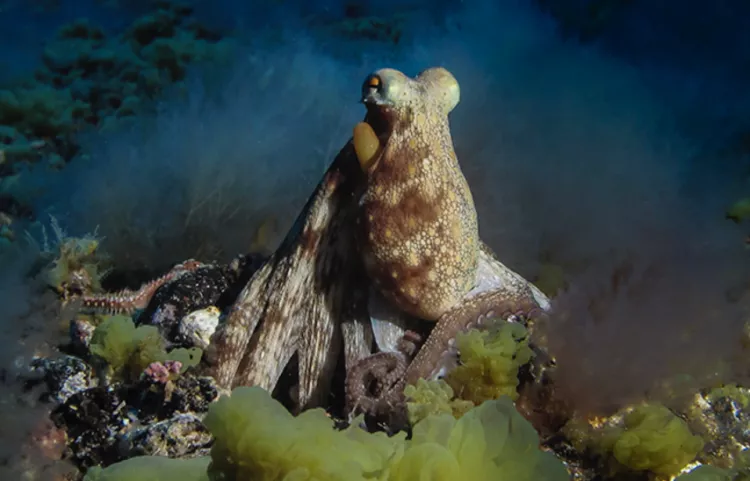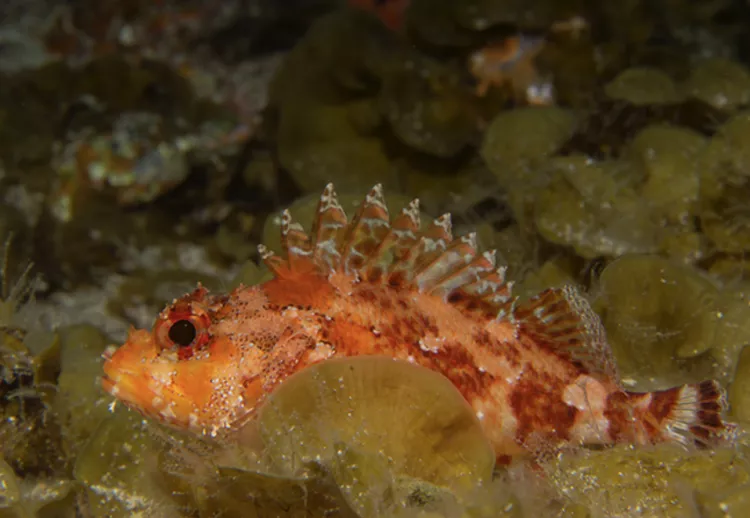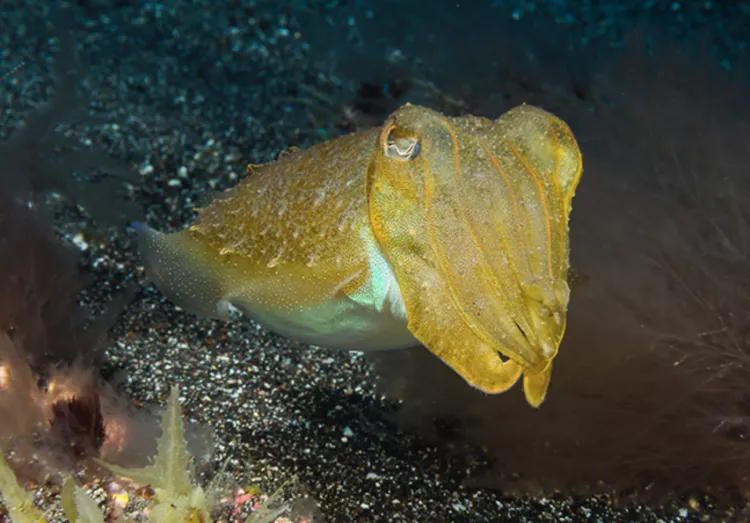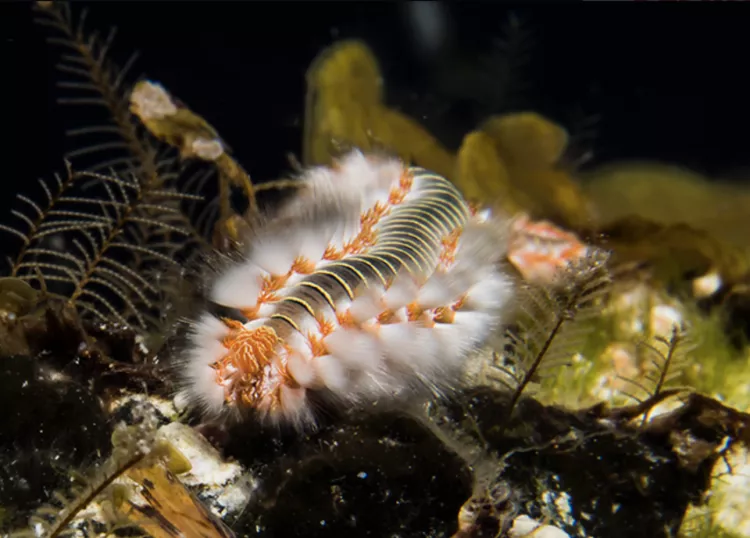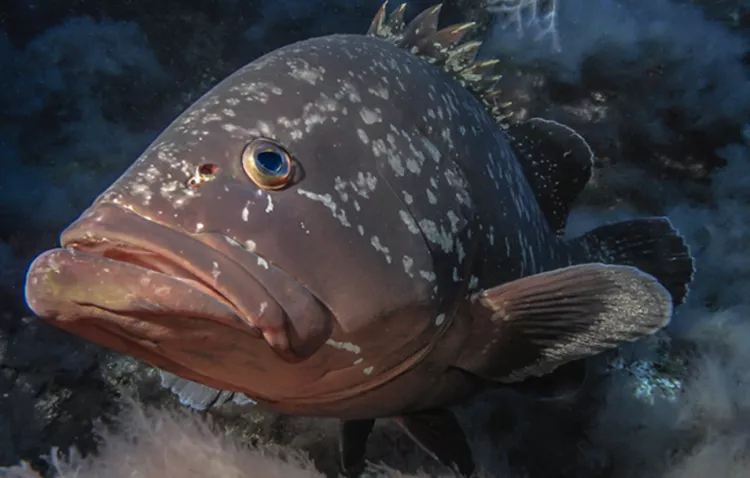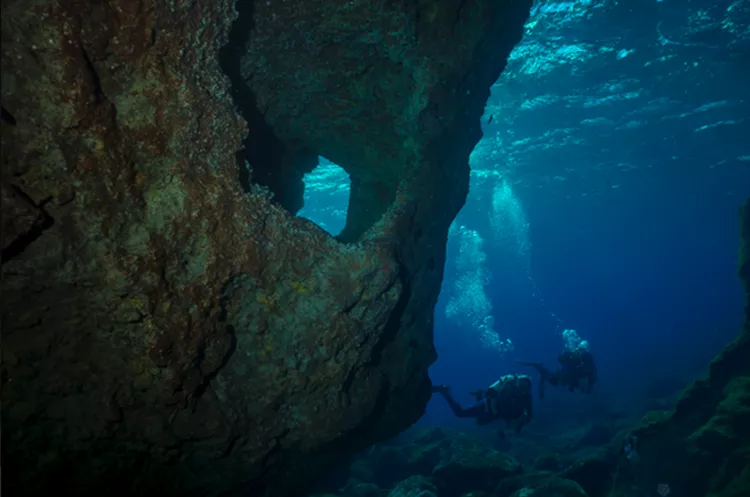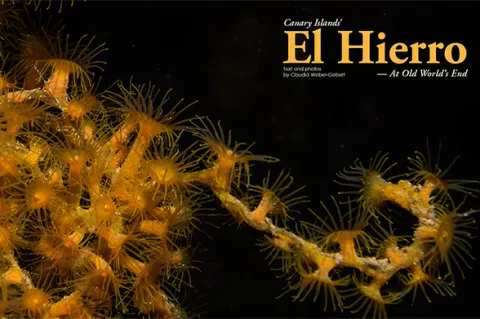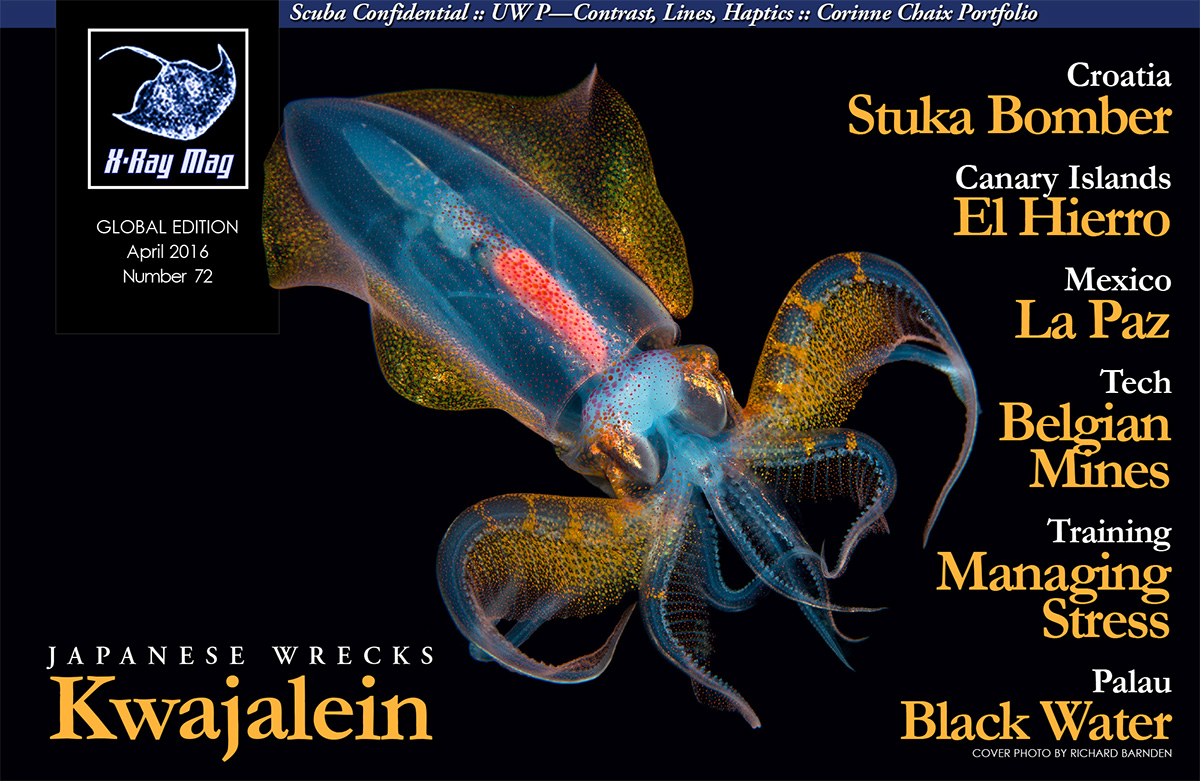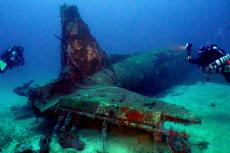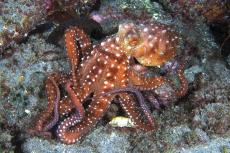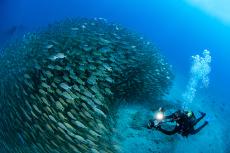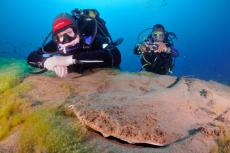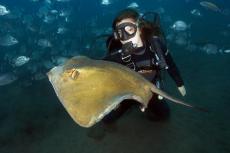Have you ever experienced absolute silence? No hassle, no stress—people seeking mass tourism would certainly be out of place here. Just relaxation and downshifting—you can set your mind at rest. This is what El Hierro is about.
Contributed by
The smallest of the seven Canary Islands in the Atlantic Ocean is located on the western side of the volcanic archipelago. It is the end of the "Old World" where the zero meridian monument is found in the vicinity of the Faro de Orchilla lighthouse. In ancient times, in Europe (the Old World), it was thought that this was the westernmost point of the flat "disk" of the world upon which people lived—El Hierro was quite literally, at the ends of the world.
The island is of volcanic origin, evidence of which can be seen all over the place, both above and under water. It is the youngest Canary Island at 1.12 million years of age. One can find so-called "ropy" lava in several places, which is otherwise found at only two other places on Earth. There are black lava fields covered more or less with vegetation, coupled with conical hills, ash deserts and crater holes; the former crater region of El Golfo has fertile orchards and a rugged coastline with bizarre rock formations. This is what you see today—an island which has uplifted itself from the sea bottom up to a depth of nearly 5km as a result of volcanic eruptions.
With elevations from zero to more than 1,500m above sea level, the small island varies with diverse climates and vegetation zones, and offers plenty of opportunities for outdoor activities such as hiking, mountain biking and, of course, water sports.
In La Restinga, the most popular town for divers, it is sunny. This is often so in the neighboring El Pinar as well, which is located about 800m above sea level—where fog and clouds dominate. Even the crater peak at 1,500m is overcast most of the time and there is limited visibility at the viewing points.
You can get to El Hierro from the bigger Canary Islands like Tenerife or Gran Canaria, by ferry or twin-engine aircraft. There are also daily transfers to the larger neighboring islands, but the timetables of the ferry and airline companies are not always aligned. For a relaxed and quiet journey, usually a stopover in Tenerife or Gran Canaria is necessary in order to get to El Hierro. Direct flights to the island from the European mainland do not exist. The airport runway is not long enough for big airplanes and cannot be extended.
About 25km long by 27km wide, and covering about 269 sq km, El Hierro is neat and comfortable, with its 10,500 inhabitants and about 1,000 tourists. There are no hotels; holiday guests stay in apartments—mostly individual tourists who are looking for something special.
In 2000, El Hierro was declared a UNESCO Biosphere Reserve. Protection zones have been established to control fishing activities. In order to preserve this wonderful place, the government monitors and tracks how many divers enter the water every day, at which location and with which dive center. In 2014, the island was declared a Global Geopark by UNESCO.
The island's flora and fauna are very interesting. With its seclusion, endemic animal and plant species have evolved over time. Special programs are currently in place to raise and propagate the almost extinct El Hierro giant lizard (Gallotia simonyi), or in Spanish, Lagarto gigante, which can be about 70cm long.
Diving
Many of Spain's most popular dive sites are located in the south of the island, next to La Restinga. Although the town is very small, nine dive centers are located there. The staff of these centers will also help you with organizing the transfer from Tenerife or Gran Canaria and finding accommodation or a rental car.
Three to four times every day, the numerous dive sites are approached by Zodiak, starting from the harbor in La Restinga. Transit time to the dive sites is about five to 25 minutes. Here, there are dive sites for everyone—from sophisticated drift dives to the "leisurely walk" underwater, deep or shallow, drop-offs or sandy bottoms, depending on your preferences. However, the island is located in the Atlantic, which means the dive sites are not necessarily suitable for beginners. You should already have at least one dive in open sea under your belt, before taking on the challenge of diving at El Hierro.
Wind and current should not be underestimated and which dive site is feasible on a given day is dependent on these conditions. Indeed, there are spots that you can dive only one or two days a year!
Depending on the diving center, the tours take groups of six to 12 divers. The equipment will be transported by car or trailer to the harbor, where it is loaded onto the boat. The distances are short.
Do compare the rates of the different dive operators; but in addition to price, ask about the conditions! Often, the dives are limited to 45 minutes for the cheaper dive packages—no matter how much gas is left in the tank. Some centers make their dives "according to plan", regardless of strong currents or changes in weather conditions. In some cases, it would have been much better to choose a different site. An experienced and accountable guide is able to manage the situation and to prepare an enjoyable and unforgettable diving experience for guests.
Our party of divers chose to dive with Jutta and Günter Baumgartel of Fan Diving Hierro. Their dive center strives to offer the most comfort; therefore, dive groups are limited to a maximum of six people. Personal service is really very important to the Baumgartels, as they take care of you, reading almost every wish from your eyes. In short: Jutta and Günter will always reassure their guests with advice and assistance, both above and under water! Defective equipment is repaired if possible and everything is straightforward—just as you would wish for on a relaxing holiday.
Underwater photographers in particular are in good hands with Günter. He knows every dive spot like the back of his hand. Accompanying them on every dive, he shows them the most beautiful spots and hiding places of sea creatures, documenting with his camera the highlights of each dive for a brief photo presentation right after the dive. These photos later become a beautiful reminder of a successful dive holiday. The small dive groups are the reason the guest lists fill up very quickly—therefore, you should sign up as early as possible.
Volcanic features
On the boat trip along the coast to the dive sites, the geological history of the island is spectacularly evident: steep walls, various layers of lava, ash, sand, and remnants of pyroclastic explosions are visible. Also clearly identifiable are hard magma channels that penetrate the rock layers upwards, vertically.
El Bajon. El Bajon, an extinct volcano, is one of the most popular dive spots on the island—some say, the most beautiful spot in Spain. This is where many Spanish divers want to go first. The rock declines steeply, down to a depth of 100m. In the various layers, which form terraces underwater, cavorts plenty of marine life. Usually, there is a mild to heavy current—so it is not an easy dive site. Due to these currents, you will often see big fish and schools of fish pass by, as well as mantas flying along.
Baja Bocarones. In addition to this awesome place, my personal favorite was Baja Bocarones—a magma rock with a 15m diameter, which rises like a needle from a depth of 42m on the sandy bottom up to 10m below the water's surface. While the rest of the volcanic cone has been eroded, the hard magma core still exists. Barracudas, mackerels and jacks are always found here, and a "pet grouper" is also present nearly every time. At this place, you can sometimes even see manta rays, which circle around the rock from the bottom to the top.
Emmental. Even the dive spot Emmental, as its name implies, has many arches, bridges, canyons and swim-throughs. There are several places with wonderful underwater landscapes that make every diver's heart beat faster.
Equipment and conditions
Everyone who carries special diving equipment should be prepared for any necessary repairs. Standard O-rings are available at all dive centers, but anything different from the norm cannot be easily purchased in the shop around the corner. So, bring special parts from home if you need them.
With water temperatures of 18°C to 24°C with good visibility at depths of some 40m or more, diving is possible all year round.
Underwater world
Since no extensive professional fishing is allowed and the authorities support sustainable fisheries, fish populations are still large. By using traditional methods in the protection zones, overfishing is very unlikely. The Peto fishermen catch single fish with long pipe harpoons from a small boat. Parrotfish are caught with a special hook by the fishermen while snorkeling—so only small numbers are caught, just sufficient for their own needs. Spearfishing is even banned in some zones. This is good for the underwater world—you almost feel as if you are in a conservation area. Unlike the Mediterranean, there are still large schools of fish to find: sardines, mackerel, jacks, peto (also known as wahoo or Acanthocybium solandri), tuna and barracuda.
Here, groupers have time to grow to an impressive size. They approach divers, are not shy at all, and even allow a certain proximity. Lobsters are very large and old and die of old age. With luck, you can also observe manta rays or see whale sharks, turtles and other large fish. Dolphins are also heard and seen on the surface—but the shy marine mammals do not come near to divers. Whales migrate in autumn and pass by a few kilometers from the coast, but rarely come close.
The overgrown caves and crevices provide shelter for eels, crabs, small animals or critters. You should always carry a lamp to light up the holes to find hiding animals—there is a lot to explore. On large sandy areas, sand eels can be found. The sand also offers good opportunities to find different kinds of rays, flatfish and a lot of octopi.
A true eye-catcher is the famous black corals on the steep rocky drop-offs. Unfortunately, these corals were the "losers" of the volcanic eruption back in 2011. Covered with mud, they had low survival rates regionally. Only a slow regeneration is taking place here. However, the dead branches of the black corals have become a starting point for other species, as yellow anemones now partially colonize these branches.
Underwater photography
An "El Dorado" for wide-angle underwater photographers, the rugged landscapes offer numerous and varied motifs: steep walls with black coral, dark sand surfaces with sand eels, caves, canyons and swim-throughs with wonderful perspectives and bizarre rock formations, varied vegetation, shy marine life and large schools of fish. For macro-photographers, it is not so easy, but you can also find beautiful critters. Snails, shrimp, blennies and anemones always offer nice photo opportunities.
It is advantageous to have a local guide with you, someone who knows the hiding places of the animals and the beautiful caves and rock formations. In this respect, our choice of dive center, Fan Diving Hierro, offered exactly that. As a passionate underwater photographer, Günter Baumgartel showed us the hiding places of the underwater inhabitants and the most beautiful areas. He is always ready with help and advice, even if things are not working or there are questions about photographic techniques.
Every year in autumn, an important photo event takes place in La Restinga: the international photo competition Open Fotosub in which well-known Spanish and international photographers compete. And it is no wonder, with all those stunning underwater scenes to shoot. This year, the competition requirements have changed to allowing only apnea divers (freedivers) to participate.
The volcanic eruption in 2011
In October 2011, about 1.8 km off La Restinga, a volcano erupted underwater and life in the fishing village was turned completely upside down. The town had to be evacuated because of the life-threatening fumes.
With ascending gases, a fish die-off took place and a layer of mud then covered the ocean floor. An unexpected situation for fishermen, dive operators and local residents, all of whom were put to a severe test. It was uncertain when everyday life would return to its usual routine again. No one could estimate the duration of the evacuation. However, since the beginning of March 2012, all dive sites have been re-opened; there is no more danger and there are no restrictions for diving.
One can see how quickly nature regenerates itself. What at first seemed destructive was, for nature, an advantage and a chance for renewal. The nutrient-rich mud from the eruption created a good foundation for flora and fauna underwater—hardly anything is visible of the disaster today .
Country and its people
You should definitely take at least one or two days to explore the island on your own. This is very easy done with a rental car. Public buses also make the trip around the island possible. Worth seeing are the Sabina Herreña—old conifers some 2,000 years old or more, which are considered landmarks of the island—or the holy garoe tree of the indigenous inhabitants. Other landmarks that can be explored include the Faro de Orchilla—the lighthouse with the monument of the former zero meridian; the laurel forests in the fog and cloud region; the cliffs in the north; the “world's smallest hotel” at Punta Grande in the ancient loading port; or the plantations of the El Golfo region. Viewing points and attractions are well sign-posted.
Everywhere on the island, the Tourism Authority has set up visitor centers with the latest technology, providing information about the history, geology and nature of a location. These centers are well worth a visit. I also recommend taking along a bathing suit and snorkeling equipment with you for an island excursion to visit one of the many natural pools or to snorkel near the Roque de Bonanza—a free-standing rock on the eastern side.
Only a few relics remain of the original inhabitants of the island—the Bimbaches—who came from the African mainland to populate the island. In the 14th century, the Portuguese and Spanish conquistadors took everything and enslaved the native population. Like Christopher Columbus, many sailors started their journey to the New World from the coast of the Canary Islands. They took advantage of the trade winds to sail their ships. Later, the islands were a trading center for African slaves. The island's archives in the capital city of Valverde were destroyed in 1899 by a fire and many documents dating back as early as the 16th century, were unfortunately lost.
The Herreños, the present inhabitants of the island, are friendly and helpful people, as our party found out when our rental car broke down. Immediately, several local motorists stopped and offered us help, acquiring auto assistance for us via mobile phone. In the town of La Restinga, you will inevitably discover pleasant village life—young and old come together in the evenings on the harbor promenade. Gossip of the day is exchanged until the late evening hours in this idyllic village with a feel-good character.
As for the food, prices are extremely low. For 10 Euros (about USD11), you can enjoy a nice meal, including wine and coffee, in small restaurants. It is worthwhile to try the local dishes. Fruits and vegetables from local plantations are inexpensive. There are many different cheeses made from cow or goat milk to try, as well as many pastries typical of the island. Also, try the small potatoes with a salty crust called Papas Arrugadas.
For those who spare no effort to get to El Hierro, the island is a secret treat, where one can leave behind mass tourism and stress. Payback is guaranteed. ■
Claudia Weber-Gebert is an advanced diver, underwater photographer and dive writer based in Germany.

